A Celiac’s Tokyo Tale
The neon glow of Akihabara, the rumblings of the subway trains, the bustling markets of Tsukiji – Tokyo is a sensory overload, a city where ancient traditions meet futuristic innovation. For a traveler, it’s a dream destination. But for someone with celiac disease, the initial excitement can quickly turn into a wave of anxiety. How do you navigate a culinary landscape dominated by soy sauce, ramen, and tempura when even a trace of gluten can derail your entire trip? That was the question echoing in my mind as I stepped off the plane, ready to explore Tokyo as a celiac.
My journey wasn’t just about finding food; it was about experiencing the heart of Tokyo without compromising my health. Above all, I wanted to find hidden gems, those tucked-away restaurants and cafes that understood the nuances of gluten-free dining. Moreover, it was about proving that a celiac can fully immerse themselves in the rich tapestry of Japanese cuisine. This post is my guide, a testament to my own experiences, and a resource for fellow celiac travelers who dream of exploring Tokyo without fear.
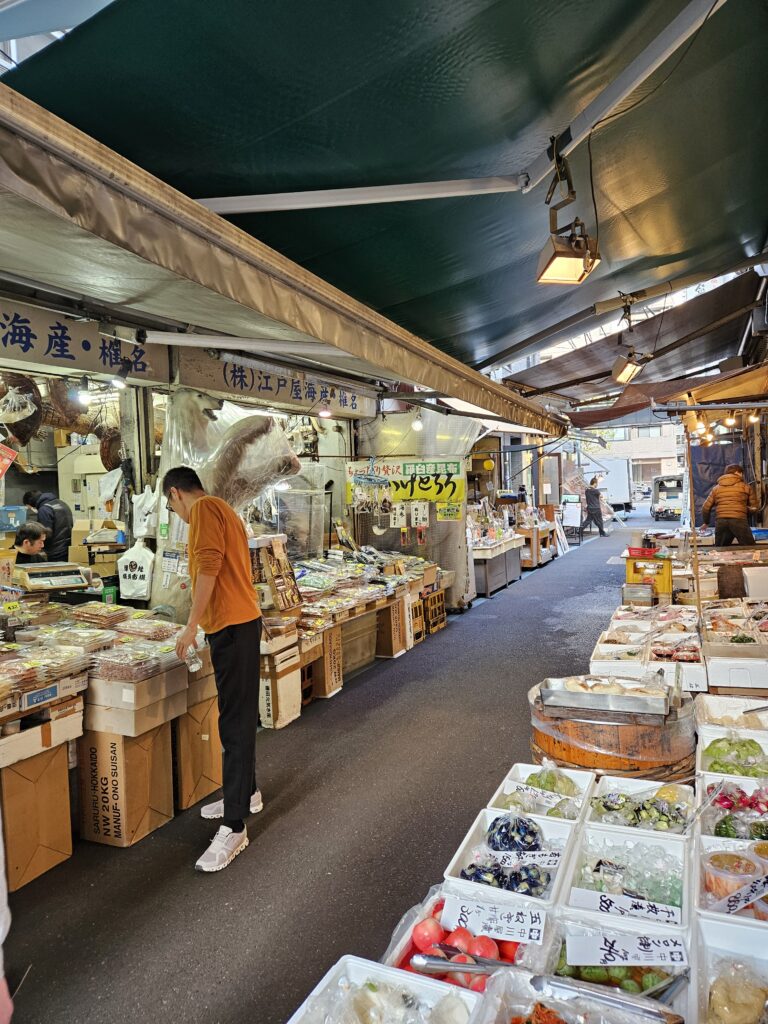
Understanding the Gluten-Free Challenge of Tokyo
What makes it A Culinary Minefield?
While undeniably delicious, Japanese cuisine presents unique challenges for those with celiac disease. Soy sauce, the cornerstone of many dishes, is traditionally made with wheat. While tempting, ramen, udon, and soba noodles are often off-limits. Tempura, with its crispy batter, poses another hurdle. Even seemingly innocuous dishes, such as sushi rolls, can be laced with hidden gluten.
The language barrier adds another layer of complexity. While English is spoken in tourist areas, many smaller restaurants and shops rely solely on Japanese. Communicating dietary restrictions can be challenging, especially when dealing with the subtle differences between “allergy” and “intolerance.”
However, it’s not all doom and gloom. Tokyo is a city of innovation and adaptation. With careful planning and a bit of resourcefulness, you can navigate its food scene with confidence.
Key Gluten Culprits
Soy Sauce: Traditional soy sauce contains wheat. Look for tamari, a gluten-free alternative.
Noodles: Ramen, udon, and most soba noodles contain wheat. Rice noodles (harusame or bifun) are safer options.
Tempura Batter: Wheat flour is used in traditional tempura batter.
Sauces and Marinades: Many sauces and marinades contain soy sauce or other gluten-containing ingredients.
Breaded or Fried Foods: Watch out for breadcrumbs or batter containing wheat.
Essential Japanese Phrases
“Watashi wa guruten-furii desu” (私はグルテンフリーです): “I am gluten-free.”
“Watashi wa komugi arerugii desu” (私は小麦アレルギーです): “I have a wheat allergy.”
“Komugi nashi de onegaishimasu” (小麦なしでお願いします): “Please without wheat.”
“Tamari shoyu wa arimasu ka?” (たまり醤油はありますか?): “Do you have tamari soy sauce?”
Tools for Communication
Translation Cards: A translated “Celiac Card” is invaluable. I highly recommend carrying a card that clearly explains your dietary restrictions in Japanese. The one I personally used and found incredibly helpful is from celiactravel.com. A Tokyo-native college friend we visited early on assured us the card was easy to understand, with natural phrasing and no confusing formality. If you choose to use a different card, keep in mind that the card must specify “celiac disease” or “gluten allergy” rather than just a “gluten intolerance,” as this conveys the severity of your needs.
Translation Apps: Use apps like Google Translate to translate menus and communicate with restaurant staff.
Dedicated Celiac Apps: Find apps specifically dedicated to celiac disease, which may include restaurant listings and other helpful resources.
Find Me Gluten Free App: This app in particular is useful in any city, but especially so when trying to find reviews from other celiacs.
My Favorite Gluten-Free Dining Experiences
Tokyo is a city of hidden gems, and that extends to its gluten-free dining scene. These are the restaurants and cafes that went above and beyond to accommodate my dietary needs.
Riz Labo Kitchen
- Location: Inside Urasando Garden, Shibuya.
- Cuisine: Gluten Free Rice Flour Pancakes and Sandwiches
- Atmosphere: Casual, bustling, and perfect for a quick and satisfying meal.
My Experience: Riz Labo Kitchen in Shibuya was a delightful surprise, serving gluten-free soufflé pancakes. We were incredibly fortunate to snag the coveted corner table with traditional tatami-style seating, which added an authentic touch to our experience. The cozy, low table and floor cushions made for an especially relaxed and intimate atmosphere, perfect for savoring those fluffy, melt-in-your-mouth pancakes. However, don’t worry if the tatami table is full! Riz Labo also offers comfortable bar seating, ideal for solo diners or those who prefer a more casual setting, and a charming outdoor area for enjoying your treats, weather permitting. No matter where you sit, the dedication to gluten-free excellence shines through. You can find their website here: Riz Labo Kitchen.
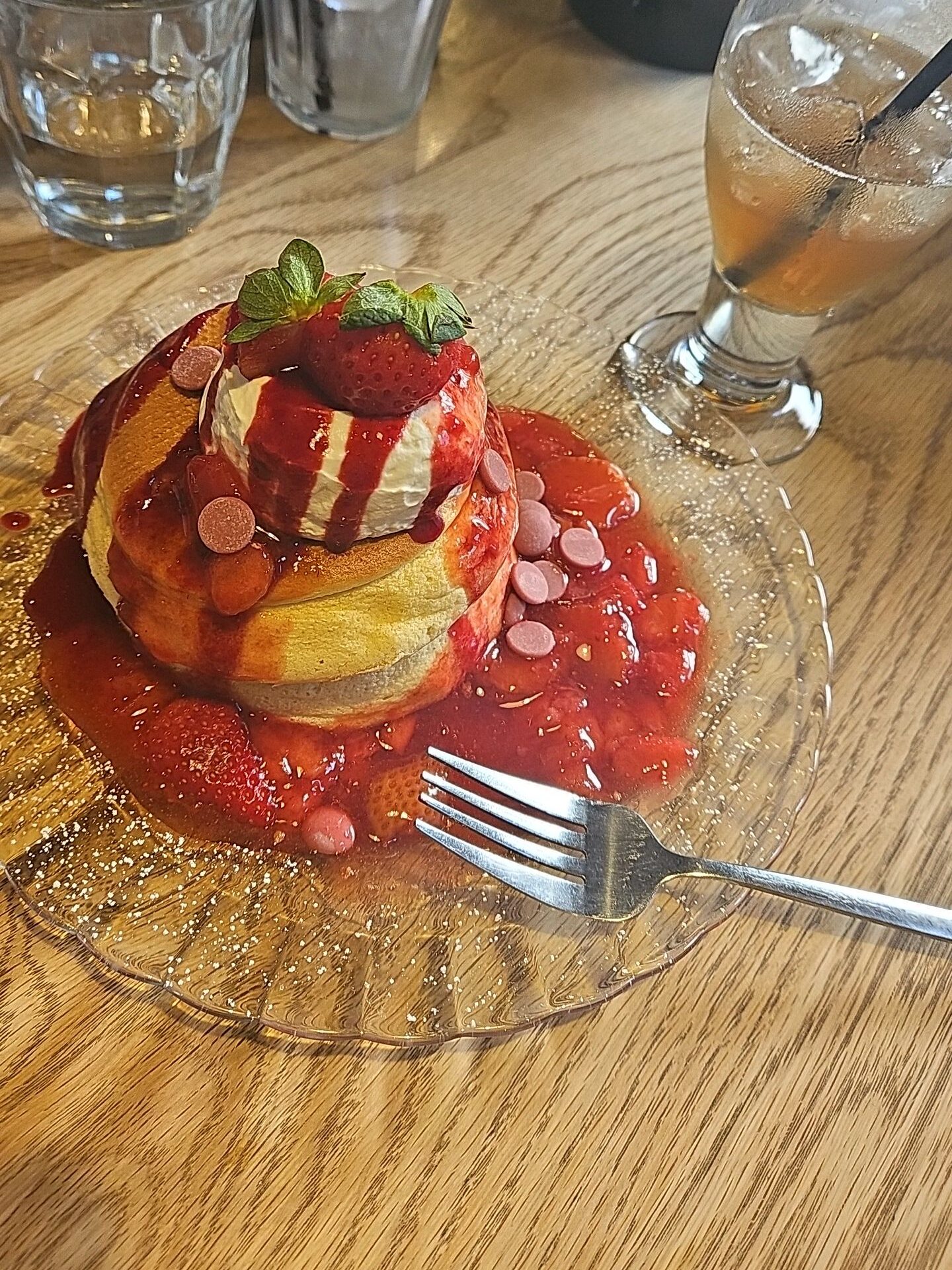
Special Strawberry Pancake
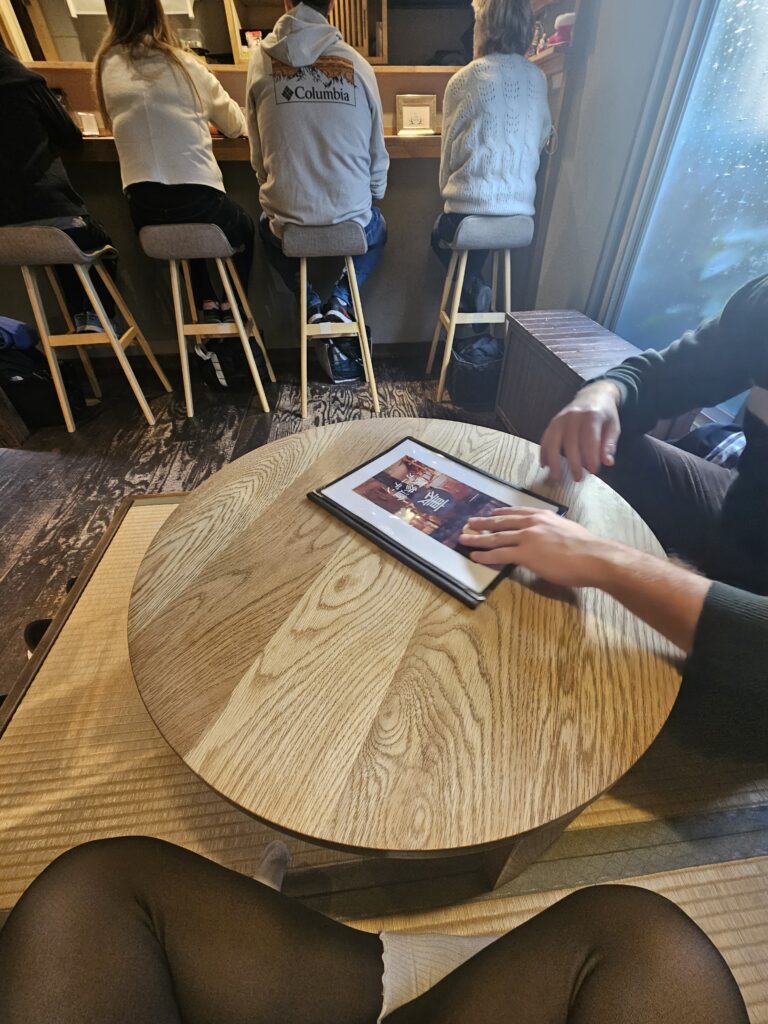
RiceHack
- Location: Shibuya
- Cuisine: 100% Gluten-Free bakery and Pizzeria.
- Atmosphere: A quiet street with a small window and a cute bench.
My Experience: Standing in front of the bakery’s warm, fragrant window, I was met with a feast of flavors. The margarita pizza, rivaling only my cherished Napoli memory, had a perfect crust and bright toppings. The curry buns, especially the cheesy version, were a revelation—the best gluten-free curry I’ve ever tasted. The garlic bread and sausage rolls were equally satisfying. All from a simple counter, it was a testament to how delicious gluten-free could be, and how much love a husband and wife team put into their craft. We only took a moment on their little bench to eat our pizzas and chat with other tourists about gluten-free recommendations for Kyoto (our next destination on the trip).
Unfortunately, I was rushing to another event and my phone was dead, so I couldn’t capture any photos, but you can see their delicious offerings on their Find Me Gluten Free page here: RICEHACK.
Where is a dog?
- Location: Kichijoji, Tokyo near the Ghibli Museum
- Cuisine: Pastas, Sandwiches, and many gluten-free pastries, as well as vegetarian items
- Atmosphere: Quaint, cozy, and eclectic with charming cat-themed decor (and one hidden dog).
My Experience: “Where is Dog?” was a vibrant, bustling little café with a cheerful energy tucked into a side street. I was so utterly captivated looking for the dog hiding among the cats that I completely forgot to take any photos until halfway through my spaghetti! I did manage to capture a shot of the remaining portion—perfectly cooked and coated in a flavorful sauce—along with my perfectly brewed latte, both crafted with evident care. Overall, the staff’s enthusiasm and the cafe’s quirky, cat-themed decor made it a truly unique experience. They also provide a vegetarian menu and specialize in allergen-free foods. You can find their Find Me Gluten Free page here: Where Is A Dog?
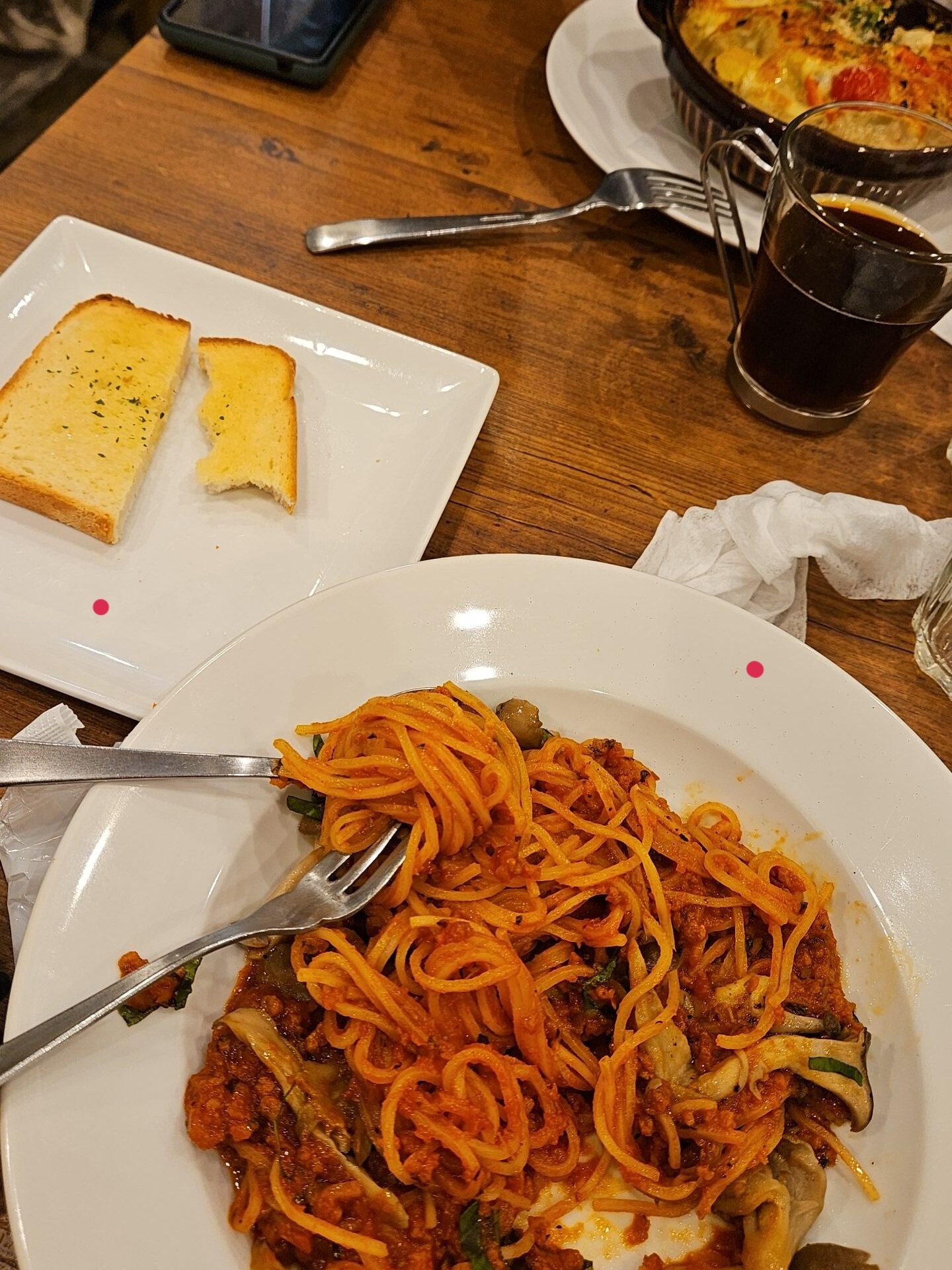
Gluten Free T’s Kitchen (Roppongi)
- Location: Roppongi
- Cuisine: 100% Gluten-Free Japanese classics with focus on major allergens
- Atmosphere: A tiny, counter-service spot, with a few tables overlooking the streets of Roppongi.
My Experience: Roppongi’s Gluten Free T’s Kitchen was a welcome sight after a rough day of gluten-related woes. Still feeling a bit delicate from the previous day’s mishap, I was hesitant, but the menu’s promise of comfort food was too tempting to resist. The space itself was incredibly cozy, a tight squeeze, but we were lucky enough to snag the table right up against the window, giving us a little slice of the Roppongi buzz as we ate.
My partner and I decided to split a few dishes, and it was the perfect pick-me-up. The chicken gyoza were tender and flavorful, and the takoyaki? Outstanding. Those were the absolute standouts, perfectly cooked and bursting with flavor—I’d honestly go back just for those two. The ramen and orange chicken, while decent, were a bit mid in comparison. Unfortunately, my discomfort from the previous day’s glutening meant I was in no state to take pictures, but every bite was incredibly satisfying. You can find their website here: Gluten Free T’s Kitchen.
BREIZH Café Crêperie Omotesando
- Location: Shibuya
- Cuisine: Creperie and French bites
- Atmosphere: a delightful slice of Brittany in the heart of Tokyo that felt like a real French café
My Experience: After a frustrating trek across Tokyo, two trains and a wasted journey to a closed-without-warning soba restaurant, we were cold, tired, and hungry. Wandering the late-night neighborhood, we stumbled upon BREIZH Café Crêperie, a beacon of warmth and light. Stepping inside, we were immediately enveloped in the cozy atmosphere and the tantalizing scent of buckwheat. Despite our initial disappointment, the crêpes were a revelation.
The flavors were incredibly rich and satisfying, and the scallops, in particular, were cooked to perfection. It was a serendipitous find, a delightful end to a challenging evening, and a reminder that sometimes the best culinary experiences are the unexpected ones. You can find them on Find Me Gluten Free here: BREIZH Café.
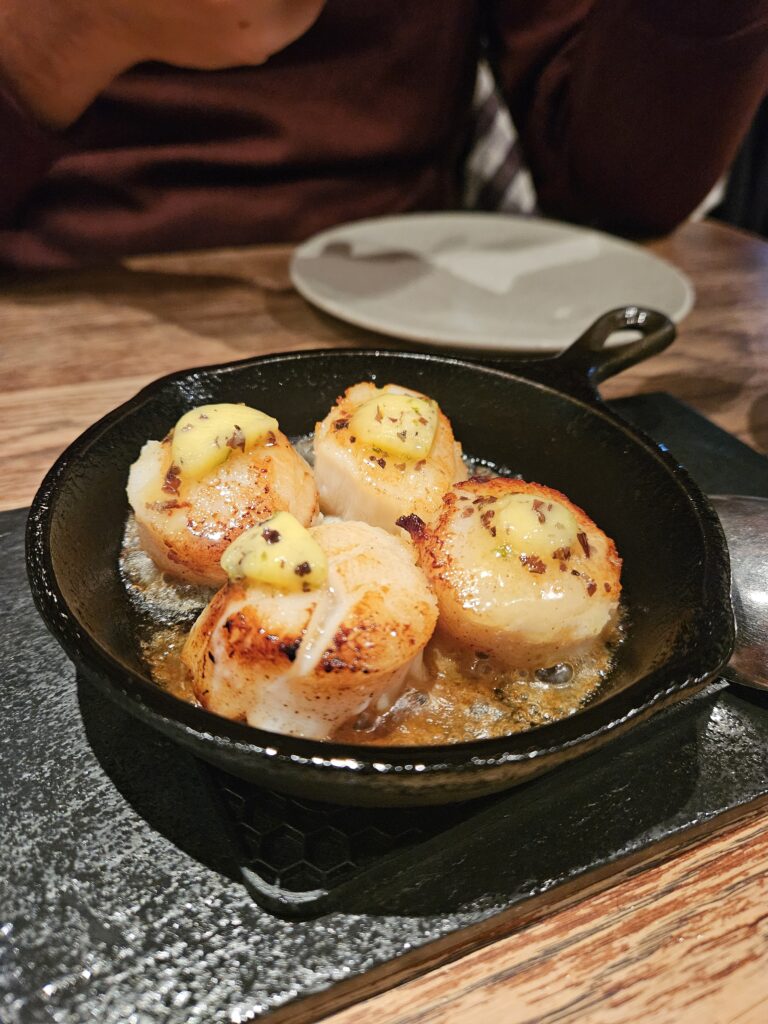
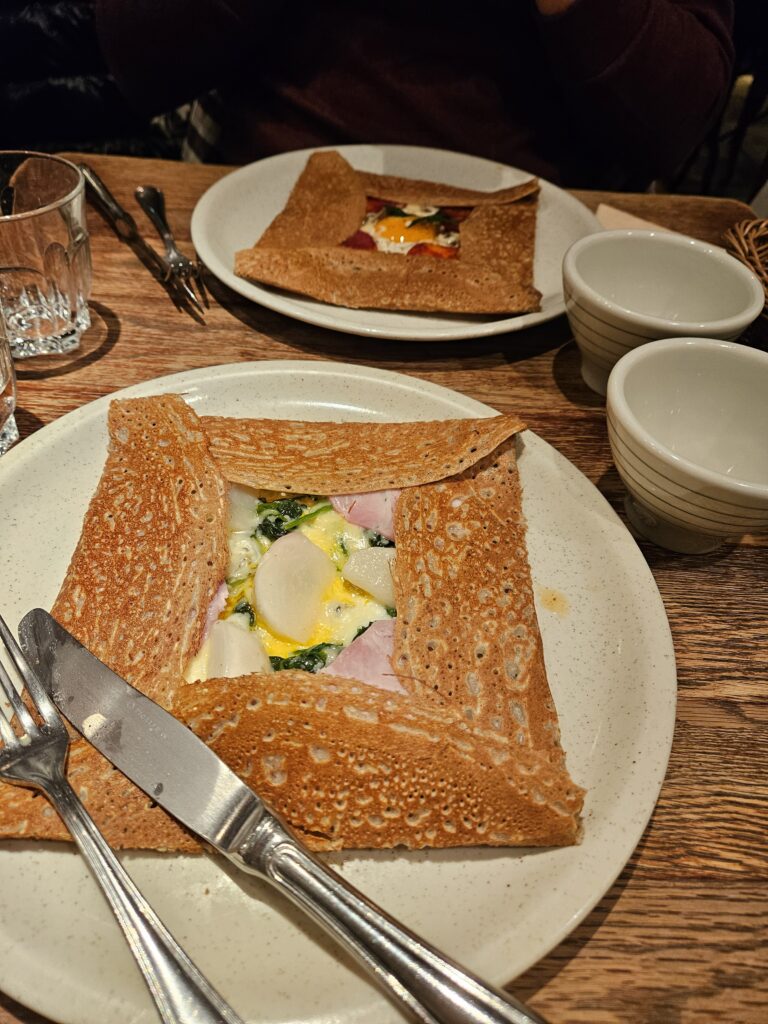
ITAMAE Sushi
- Location: Ginza
- Cuisine: Classic sushi restaurant
- Atmosphere: a refined, welcoming atmosphere with both counter and booth seating.
My Experience: ITAMAE Sushi in Ginza provided an exceptional experience. We chose counter seating, which allowed us to observe the chefs’ skillful preparation firsthand. They were both welcoming and informative, taking my gluten allergy seriously and even sharing some useful Japanese phrases. While a pre-dinner visit to the Ginza 300 BAR slightly impacted my ability to capture photos, the memory of the sashimi remains vivid.
The salmon, in particular, was outstanding. The shrimp, while still palatable, possessed a slightly more bitter taste than I typically expect. The atmosphere was refined yet accessible, especially considering the reasonable pricing for such high-quality sushi. It was a testament to the fact that enjoyable dining experiences can be achieved without excessive expense. See what they offer here: ITAMAE Sushi.
Classic Tokyo Flavors, Safely Enjoyed
While hidden gems offer unique experiences, it’s also essential to find places that can adapt classic Tokyo dishes for celiacs.
Yakitori
Grilled chicken skewers are a common and popular street food in Tokyo. However, be mindful that teriyaki sauce often contains wheat-based soy sauce. To ensure a gluten-free option, request skewers seasoned with salt or other gluten-free spices. Ask for plain grilled chicken, and if you are able, saying “Komugi nashi no yakitori o onegaishimasu” (小麦なしの焼き鳥をお願いします) will help to avoid any potential gluten exposure. This means “I would like some wheat-free yakitori, please.”
Sushi
Dining on sushi in Tokyo as a celiac is certainly possible, though it requires some awareness. Many sushi establishments are accommodating and usually provide tamari soy sauce as a wheat-free alternative. I recommend avoiding sushi rolls containing tempura or other breaded elements, as these normally incorporate wheat flour. Additionally, be aware that imitation crab, or kanikama, may contain hidden gluten. It’s essential to ask about its ingredients with the chef or staff. When possible, sashimi is a naturally gluten-free choice. I initially thought nigiri would be equally safe, but discovered while in Tokyo that some rice vinegars do contain gluten so, as always, double check.
Rice Dishes
Rice is your friend in Japan! You might enjoy onigiri, which is usually available at convenience stores too, or perhaps a donburi, a rice bowl with various toppings. Ochazuke, aka rice with tea, is another comfort option. However, it’s important to be mindful of the toppings and sauces that accompany these dishes, as they can sometimes contain hidden gluten. Similar to nigiri, the rice vinegar used in some onigiri can also contain gluten, so be extra careful.
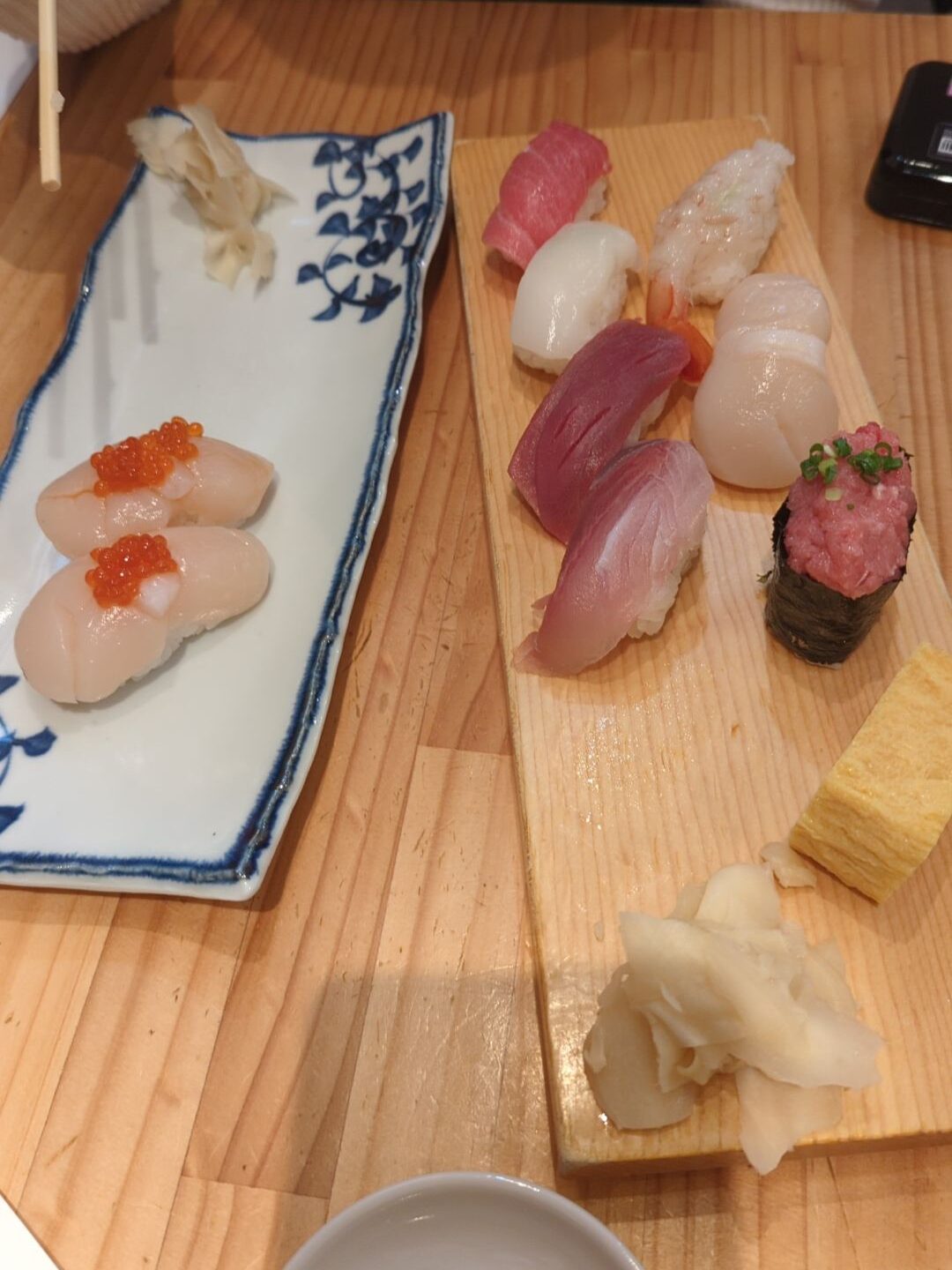
Final Bites
Tokyo, with its dazzling array of culinary delights, proves that gluten-free travel is not only possible but also incredibly rewarding. From hidden gem bakeries to elegant sushi counters, the city offers a wealth of safe and delicious options. Of all the neighborhoods, I found Shibuya to be particularly gluten-free friendly, and I’d eagerly choose to stay there in the future for its easy access to diverse and accommodating eateries. With a bit of planning, clear communication, and a spirit of adventure, celiac travelers can fully immerse themselves in Tokyo’s vibrant food scene, creating unforgettable memories along the way.